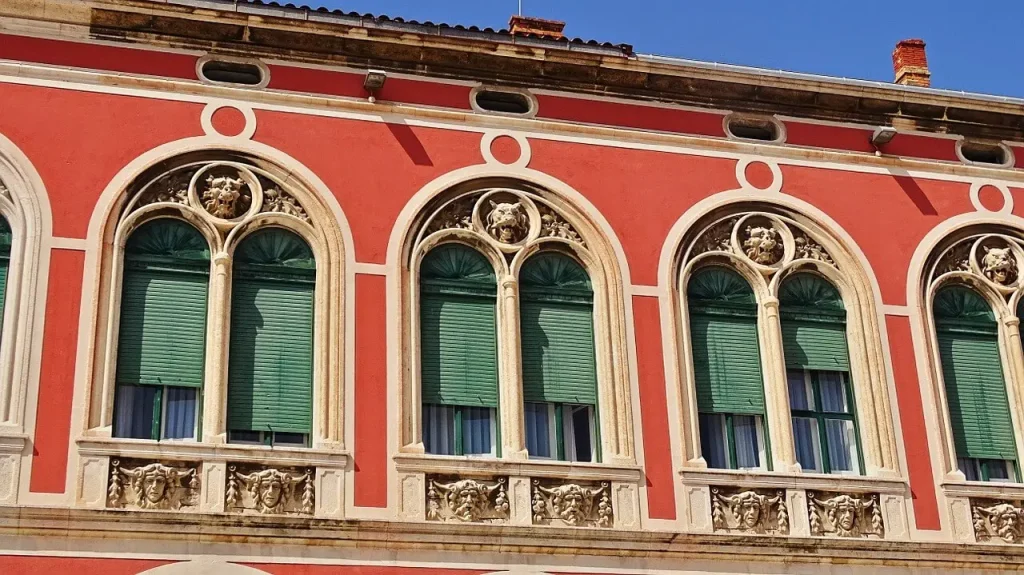“What does the life of a quarantined tourist look like? Of course, you can’t go anywhere but the room, but you get some unplanned extra rest. They are left groceries on a table in the hallway and receive a knock on the room door. We go out, take what they need and bring it back inside. For ten days.”
Andrej Kovač, the coordinator of all Split-Dalmatia County quarantines, appointed by the County Headquarters, describes the life of foreigners who ended up in isolation in a Split hotel after testing positive for coronavirus. The first of two county addresses is reserved for tourists who test positive; the second is located in a small town a few kilometers away from Split, reports Slobodna Dalmacija.
That the coordination between Split’s Civil Protection HQ and the Red Cross works great was confirmed recently by a Split landlady, whose two guests tested positive just before returning home to Great Britain, which is why they ended up in quarantine in Split at the price of a bed and breakfast – 45 euros. It was not easy for them at first, nor for other tourists in the same conundrum, but they accepted the situation. What must be done, must be done, says Kovač.
“Of course, there is no beach, but they sunbathe on the balcony. They surf the internet, watch TV, read … They are satisfied. We definitely want to make it easy for them, so we are at their service for everything they need. Many of them order meals through delivery services, which are delivered to reception, and we pick up the orders and carry them to their rooms. They pay with cards; everything is contactless. Do they have any requests? Um, they’d love to drink alcohol, but we can’t let them. But that’s perfectly normal; people want to relax a little bit. When they come out, everyone is happy and content; they don’t create problems. They are decent people; they want to do it as soon as possible and go home,” adds the coordinator.
A young German tourist even told Kovač that he would definitely return regardless of this inconvenience because Split and Split-Dalmatia County are in his heart. He has been spending his summers in the area for years and does not want to give up his favorite holiday destination at any cost.
Another young fan of the Adriatic tested positive before returning home from vacation. Positive test results are often found at the airport, just an hour before the planned departure from Croatia. Among the infected foreigners, however, are those who have just arrived in the country.
“Our biggest problem is people who go home. The fact is that some tourists entered our country positive, even though they were vaccinated or previously infected, so they had European COVID passports and entered Croatia with them. It is also a fact that certain hotels, for the sake of their image and safety, test their guests upon arrival, and it happens that some of them come positive. That was the case with two Americans, for example. They entered the country not knowing they were positive, although they also had a negative test, which is valid for 48 hours. In the end, they ended up with us. And they are delighted with our service and coordination. They do what they have to do, and you can imagine how they feel. They planned a vacation, complied with everything that was needed, and in the end, they ended up in a ten-day quarantine and have additional costs,” Andrej Kovač reveals.
According to Split quarantine records, most infected tourists come from Great Britain, France, Portugal, and Spain.
“The French en masse, and there were a few Germans. And they all had COVID certificates with which they entered Croatia. Compared to last year, we did not expect this number of infected people, given the COVID certificates. Last year, we had 11 infected people in our quarantine all summer, and significantly more this year. Last year, everything was open; there were no COVID certificates or tests,” notes Andrej Kovač.
He explains that an additional problem for the infected is the inability to use public transport.
“If they are infected, they must not enter planes, trains, buses, or ferries. Everyone who comes to us is tested at the airport before leaving the country, or those who, before traveling, believing that they are healthy, were tested the day before in a lab. Of course, there happen to be positives among them. When we receive a report of an infected tourist through the county Red Cross, we pick them up in a vehicle with a protective barrier between the driver and the passenger and take them to quarantine. When they complete a ten-day quarantine, which starts exactly at midnight from the day the infection is determined and ends on the tenth day at midnight, they receive a confirmation from the epidemiologist in English that they have done it and can leave the country,” explains Andrej Kovač.
Until August 1, for example, Germany allowed its infected citizens to return by car to the country and continue quarantine on its soil. Since then, Germans must also remain in quarantine and have a negative test when they return to Germany.
From the end of June until today, about a hundred tourists have passed through quarantine in Split. In comparison to other cities, Makarska has only just received an auxiliary, small quarantine. Trogir, for example, does not have quarantine, as Split covers that area. Brač, and the island of Hvar, has a quarantine area in reserve through which about five foreign nationals have already passed.
The contact person in coordination for Hvar is Katarina Buratović, director of the Red Cross City Society, who, together with members of the Hvar crisis headquarters, takes care of infected people in the quarantine there.
“The islands had to be organized because we cannot transport the infected to Split by public transport. There is no quarantine in Šibenik-Knin County; there is something in Dubrovnik-Neretva County. In fact, the greatest news is that there are no infected Croatian people,” Andrej Kovač pointed out.
Discerning landlords allow COVID-positive to stay.
“It seems to me that we have COVID tourism. Some private renters are very polite and considerate, so they allow guests COVID-positive guests to stay in their facility as their quarantined accommodation and they cancel reservations for the next guests. They are not rude and throw people out on the street. True, we hear everything, that some behave the opposite, but we do not have records of such,” says Kovač.
However, it is their duty to educate such renters on how to disinfect apartments after the departure of infected guests. There were situations when apartment owners called him at midnight and tourist accommodation owners who wanted guests transferred to the county quarantine.
“The biggest problem is that the entire Šibenik-Knin County and some other parts of Dalmatia gravitate towards Split Airport, where most tourists are tested before leaving the country. And all confirmed infected passengers from the airport are counted in Split and Split-Dalmatia County, which turns out to be the most problematic,” said Kovač, who adds that Split and the rest of the county, as a result, rises to the top of the infamous infections list in Croatia.
That Split Airport is quite lively is also evidenced by current air traffic data. Compared to the pandemic 2020, in June this year, the total passenger traffic at Croatian airports was higher by 285.4 percent. The most passenger traffic was realized by Split Airport, with 115,000 passengers, which is 360.1 percent more than in June 2020, when only 25,000 passengers were transported (in June 2019, 510,000 passengers were transported).
Split Airport is followed by Zagreb Airport with 100,000 passengers (in June 2020, 43,000 passengers were transported and in June 2019 333,000 passengers), and Dubrovnik Airport with 59,000 passengers (in June 2020, only 10,000 passengers were transported, and the year before 414,000 passengers ).
For all you need to know about coronavirus specific to Croatia, make sure to bookmark our dedicated COVID-19 section and select your preferred language.










